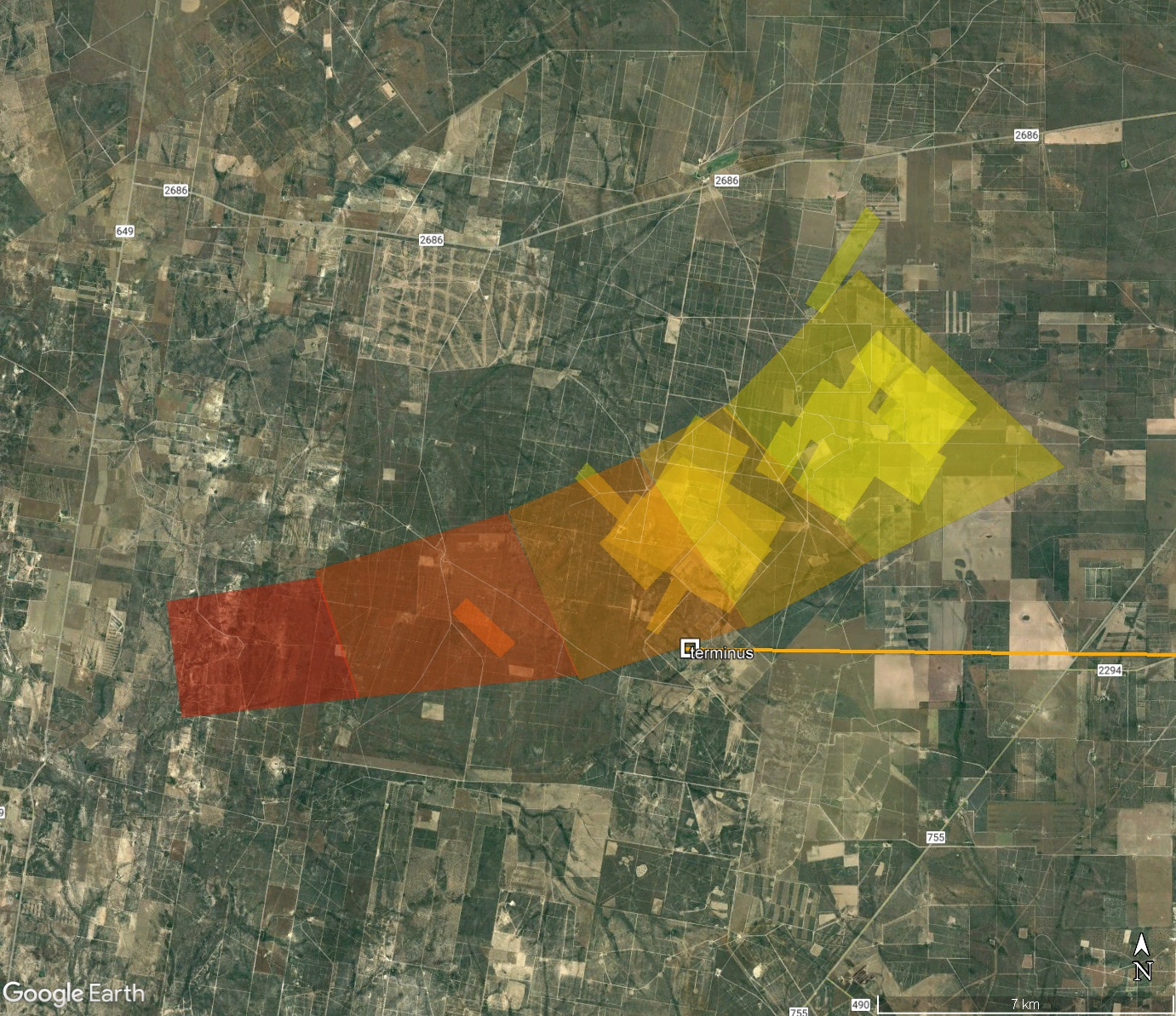DATE/TIME2/15/2023 @ 2322 UTC2/15/2023
|
LAT/LONG26.592252 • -98.629942
26.592252
|

NASA Confirms Meteoroid Entry
NASA is examining reports of an atmospheric fireball about 6 p.m. EST, Feb. 15, near McAllen, Texas.
Based on analysis of preliminary information from several sources, NASA experts believe the object was a meteoroid about two feet in diameter weighing about 1,000 pounds. The angle and speed of entry, along with signatures in weather radar imagery, are consistent with other naturally occurring meteorite falls. Radar and other data indicate that meteorites did reach the ground from this event.
Although meteorites tend to hit Earth’s atmosphere at high speeds, they slow as they travel through the atmosphere, breaking into small fragments before hitting the ground. Meteorites cool rapidly and generally are not a risk to the public.
NASA does not maintain collections of meteorites found in the United States. Instead, these meteorites are curated by the Smithsonian Institution and other scientific and academic institutions around the country. When samples such as the remnants of this event are collected and studied, they enhance our understanding of the origin and evolution of our solar system and our local natural space debris environment. If individuals believe they have found a fragment of the meteorite, please contact the Smithsonian.
Small asteroids enter the atmosphere above the continental United States once or twice a year on average and often deliver meteorites to the ground.
The meteor seen in the skies above McAllen is a reminder of the need for NASA and other organizations to increase our understanding and protection of Earth, to combine scientific and engineering expertise to advance human space exploration, to integrate terrestrial and planetary research for furthering our understanding of the solar system, and to promote successful space missions by mitigating risk. NASA is home to the world's leading extraterrestrial sample scientists, as well as the most extensive collection of extraterrestrial materials on Earth.
NASA’s Astromaterials Research & Exploration Science Office at Johnson Space Center in Houston is working with the agency’s Meteoroid Environment Office at Marshall Space Flight Center in Huntsville, Alabama, on this analysis.
For information on NASA programs that track astromaterials and meteorites:
